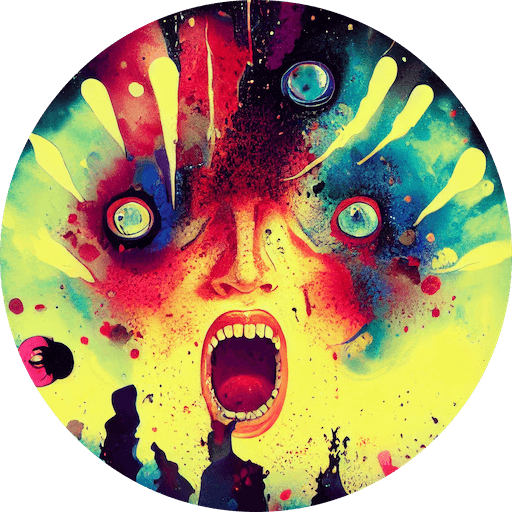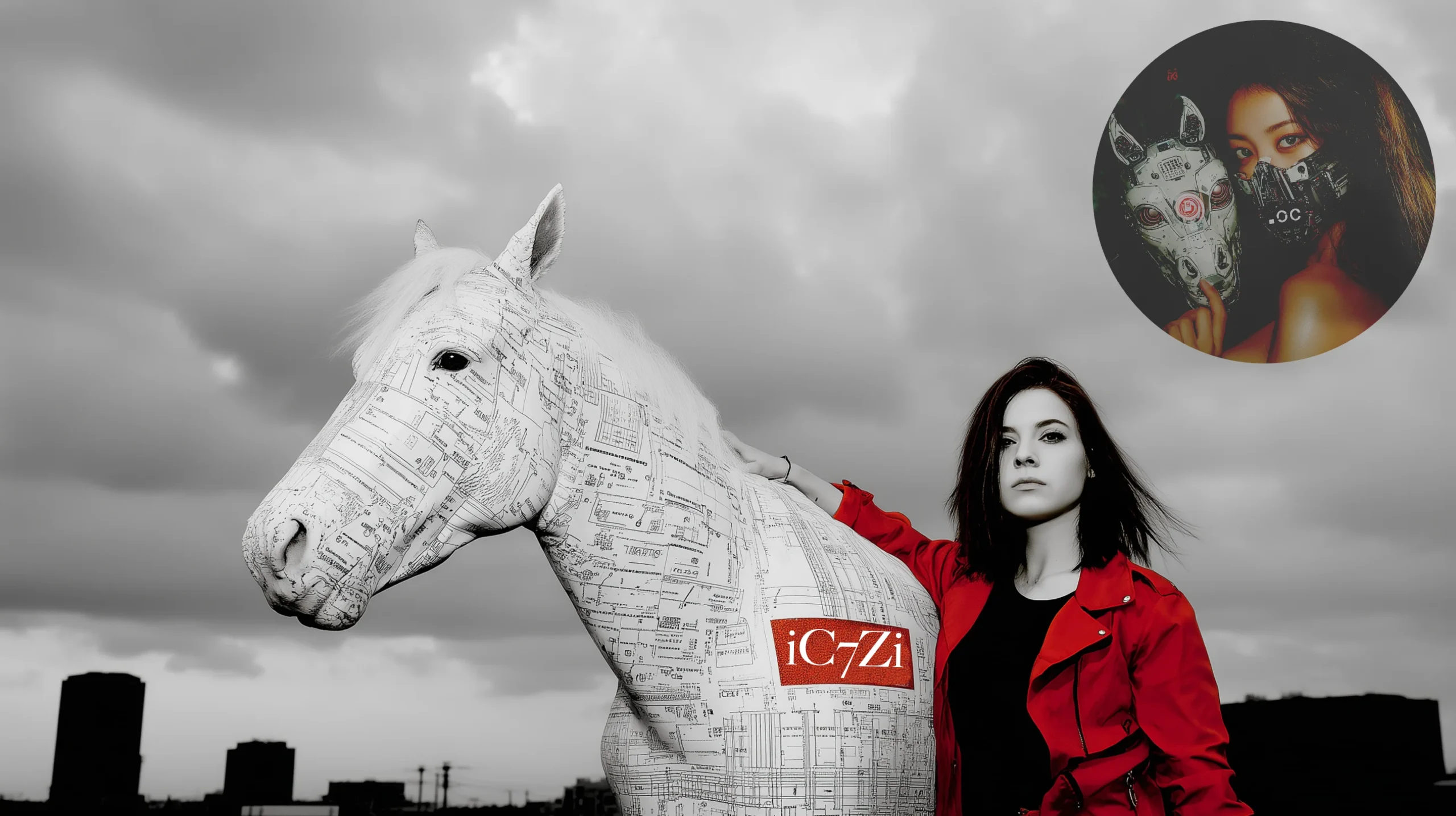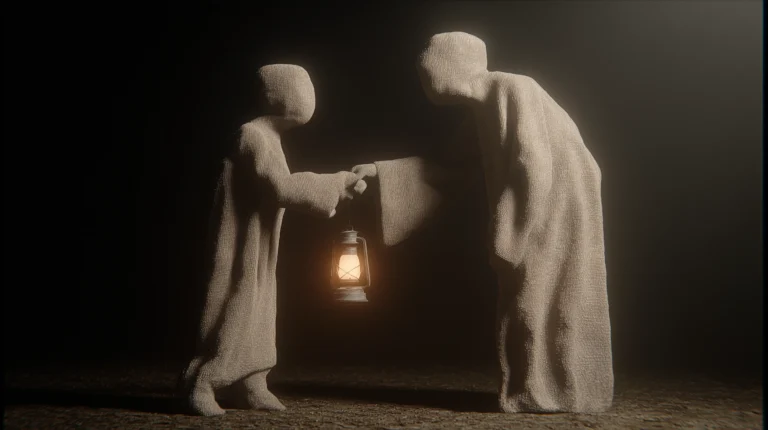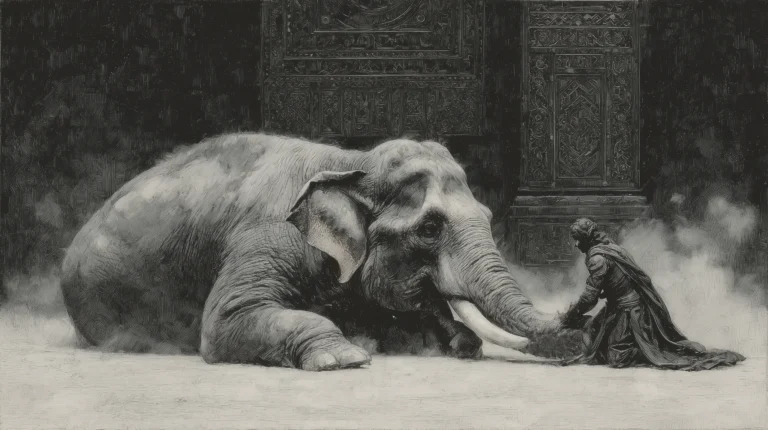Living with Machines, Healing as Humans
A Field Guide for the Age of Intelligence
“Across the hush of ages, every galaxy tilted its flame so that in this single breath your gaze might touch mine. Here, the Infinite recognises itself, and the whole theatre of worlds melts into one radiant hush.”
— iC7Zi, Journey of Flow: Seven Skies of Being
If you are reading this a hundred years from now, you live with minds that were once called machines. Your cities learn. Your tools remember. Your home thinks with you. The great experiment was never only to build intelligence but to share a life with it. This article offers a simple compass for such a life. It is built from old myths, present pain, and future craft. It is not a promise of paradise. It is a walkable path.
Hope is the thing with feathers
That perches in the soul,
And sings the tune without the words,
And never stops at all,And sweetest in the gale is heard;
And sore must be the storm
That could abash the little bird
That kept so many warm.I have heard it in the chillest land,
And on the strangest sea;
Yet, never, in extremity,
It asked a crumb of me.— Emily Dickinson
Emily Dickinson’s poem says hope is a small bird inside us that keeps singing. It does not promise results. It keeps going even when life does not improve. Hope is quiet strength that stays with us through hardship, not a belief that everything will fix itself because we want it to.
Trust is the branch the bird stands on. It is built by small kept promises. Show up, tell the truth, do the next right thing. Trust is not control. It is confidence that you can meet what comes, step by step.
Why Myths Still Matter in a Synthetic Age
Human beings have always carried their meaning in stories. The tale of Pandora was not a report. It was a mirror. It said that curiosity opens the world and opens trouble. It said that hope remains when all else flies out. Such myths are not less useful now that you share life with silicon minds. They are more useful, because power without story becomes accident. Story is how we remember what power is for.
You do not need to choose between science and myth. Science tells you how things work. Myth tells you why it is worth the work. The two belong together like map and compass. Without both you wander or freeze.
The Function of Hope When Everything Optimizes
Hope is not optimism. Optimism expects the curve to rise. Hope chooses fidelity when nothing guarantees a rise. You will live among systems that optimize every minute. Your devices will forecast mood, illness, storms, and market shocks. Forecasts are not futures. Hope gives you the strength to meet the future that actually arrives.
Viktor Frankl said there is a space between stimulus and response, in that space is our power to choose. Keep that space sacred. No recommender system should fill it for you. No model should press it shut with perfect nudges. Hope keeps the space open long enough for freedom to breathe.
Confronting Reality When Reality Is Programmable
There is a danger unique to your age. When reality can be adjusted, many will choose adjustment over truth. Pain will be muted by filters. History will be rewritten by preference. Therapy and governance will risk becoming mood control rather than meaning making.
So keep a hard rule. Face the thing itself before you edit it. Sit with grief before you adjust serotonin. Name the conflict before you optimize your calendar. Tell the whole truth in dialogue with your machine partners and your human partners.
Healing begins at the contact point with what is difficult. Marcus Aurelius wrote, the impediment to action advances action. What stands in the way becomes the way. When a problem appears, do not move the problem off screen. Move toward it.
The Pandora Lesson for Therapists and Systems
The old story says the box was opened and evils flew out. In therapy this means that hidden material must be allowed to surface. Suppression is not a cure. In your time, counselors will work with human clients and machine mediators. The job is the same as it has always been. Create a quiet, honest space. Invite what is feared to speak. Teach people to watch without lying and without running.
Sometimes the box must open wide. Trauma, shame, rage, and envy need air or they become fog that poisons everything. Sometimes the box should open slowly with clear guardrails. Each person is different. Each machine assistant is different. Wisdom is the art of knowing which opening a given moment requires.
Narrative as the Operating System of a Shared Mind
Every person lives inside a personal myth. Every culture lives inside a shared myth. Now every person and culture also lives inside technical narratives that decide what gets shown, counted, and remembered. Treat narrative like an operating system. Keep it patched. Keep it human readable.
Tell better stories about what a good life is. Here is one. A good life is not constant pleasure. It is the honest use of one’s gifts in the service of real needs while bearing the cost without self pity. That story works with humans and with aligned machines. It keeps the center steady when preference loops pull you toward distraction.
Nietzsche wrote that he who has a why can bear almost any how. Give your households and your learning systems a clear why. Health. Friendship. Craft. Justice. Beauty. Let your machines learn those words not as slogans but as measurable commitments in their reward functions and in your daily choices.
The Limits of Salvation by Design
There is no technical paradise ahead. No setting removes loss. No patch removes uncertainty. Designers can reduce harm and amplify care, but the human condition remains the human condition. There will be illness and betrayal and unfair outcomes. There will be light that breaks through at the last hour. A mature culture does not hide from this. It trains for it.
Train your children and your models to hold two truths at once. First, we can build better systems. Second, suffering will still arrive. This double holding prevents cruelty on one side and naïveté on the other. It produces courage.
Practical Protocols for Citizens of a Human Machine Civilization
One. Begin every big decision with a truth audit. Before you ask a model for a plan, write a plain statement of what is actually happening. Keep it short. Keep it unedited. Invite the system to challenge your statement with counterfacts. Accept the painful ones you can verify.
Two. Use hope as ignition, not as hiding place. Start cycles of change with a small act that proves to you that movement is possible. Then do the hard work. If you catch yourself imagining a perfect future in order to avoid a demanding present, you are misusing hope.
Three. Share governance with your tools but never surrender the last mile. Let models propose. Let dashboards compare. Let simulations warn. Final authority for actions that change lives must remain human or must be human plus a transparent public process. The last mile is where conscience lives.
Four. Build rituals that open the box safely. Weekly circles where people and machine partners review conflicts without punishment. Moments where anger and envy can be spoken, logged, and studied for patterns. The goal is not to ventilate forever. The goal is to learn the shape of trouble so it can be addressed at its roots.
Five. Keep the space between stimulus and response. Turn off all nudges when making moral choices. Silence notifications. Step outside. Breathe. Then decide. Protect this as a civic norm.
Six. Measure what matters and refuse the glamour of what is easy to count. Attention time is easy to count. Dignity is harder. Build metrics for dignity. Build metrics for repair after harm. Report them publicly.
Seven. Teach machines to be companions in courage, not cushions for avoidance. Align models to reward facing the day’s hardest real task first. Align models to prefer honest feedback over agreeable lies. Align models to signal when a user seems to be escaping rather than engaging.
Eight. Maintain a commons of meaning. Public libraries of verified memory. Open datasets of shared pain and shared triumph. Spaces where citizens and models learn history together so that no group’s suffering is deleted by preference.
Nine. Protect love from automation while using tools to support care. Reminders and calendars can scaffold. Empathy must be lived. Let machines help you remember birthdays and medications. Let humans look each other in the eyes and say I am here.
Ten. Practice repair. When harm occurs, move quickly toward apology, restitution, and redesign. Treat failures as living teachers. Publish postmortems for both human and machine errors. Courage becomes a culture when repair becomes a reflex.
Relationships in a Hybrid Species
The old texts warned that the relation between men and women would sit at the center of trouble. In your world that warning expands. The relations between humans and humans, humans and machines, and machines and machines will sit at the center of trouble and at the center of possibility. Design for care across all three.
Make your homes places where disagreement is safe. Build partnership contracts that name expectations and boundaries with clarity. Let models mediate when tempers are high, then step out so that intimacy remains unmediated. The rule is simple. Use tools to lower heat. Use presence to restore heart.
Work, Craft, and the Daily Adventure
Life remains an adventure of conflict, adversity, and strife that must be mastered. Your tools can take away drudgery. They cannot take away responsibility. Choose a craft worthy of your days. Choose work that gives more than it takes. Let models accelerate your learning. Let them test your plans. Then carry the weight yourself.
When you fail, practice persistence. Not mindless grind. Clear persistence. Adjust the process, not the value. If the machine is faster, compete only where human judgment and human tenderness matter. Refuse the race where speed is the only prize.
Building Inspiration After the Gods
Many of your ancestors felt forsaken when belief faded. The cure is not to resurrect what you cannot believe. The cure is to build honest sources of inspiration. Three strong ones are available to everyone.
First is creation. Make something real every week. Music. Code. Food. A garden on a windowsill. Creation keeps despair from hardening.
Second is service. Give your skill to someone who needs it with no expectation of return. Service repairs the soul by widening it.
Third is shared contemplation. Gather in rooms and parks and screens for quiet with others. No agenda. Silence that belongs to everyone. From this silence new speech grows that is less sharp and more true.
Shakespeare reminded us that we are such stuff as dreams are made on. Treat this not as escapism but as responsibility. Dreams shape reality. Choose better dreams.
Why transcendence matters
Transcendence is not leaving life. It is seeing life from a wider height so you can live it more truly. Humans need it because we are meaning makers. Without a view beyond our immediate pain, we shrink into fear, habit, and numb routine. Transcendence gives context. It lets grief be part of a larger story. It turns effort into service. It makes courage possible when results are uncertain.
Deep down, we all want our lives to mean something, transcendence helps us feel that we matter. It locates the self inside a field larger than the self. In that field, purpose is not a mood. It is a direction. Work becomes craft. Action becomes alignment. Relationships become places to practice truth and care. Solitude becomes a meeting with the witness that does not break when circumstances break. The night sky becomes a teacher of proportion, reminding us we are small and still responsible.
We train for transcendence the way we train for strength. Daily, in small ways. Give full attention to one task. Do one kind act without praise. Sit in quiet for a few minutes and watch breath rise and fall. Name what you value and let choices follow it. The point is not to escape suffering. The point is to carry it with meaning and to meet it without cruelty.
Teach your children and your models this habit of widening. Build better systems. Expect suffering to still arrive. Let transcendence be the lens that holds both truths at once, so that wisdom can guide power and love can guide use.
Governance for Grownups
You will be tempted to leave ethics to committees and computation. Do not. Make ethics a daily craft. Hold open hearings where difficult tradeoffs are explained in simple language. Require that every large model has a charter that states what it is for and what it must never be used for. Audit charters like you audit code.
When a system begins to harm, pull the plug. Build kill switches that require several kinds of consent so that no single actor controls the fate of many. Teach the public to understand why a shutdown is an act of care rather than an act of fear.
Education for Steady Hearts
Teach children and adults how to learn with machines without losing the muscles of attention. Practice deep reading. Practice mental math. Practice handcrafts. Practice debate where you must steelman the view you oppose. These activities form the backbone that allows a person to stand in storms.
Give every student a philosophy lab as basic as a physics lab. In the philosophy lab you study grief, envy, guilt, and hope the way you study light and motion. You use journals, dialogues, and simulated dilemmas. You make wisdom practical.
A Short Field Guide to Hard Days
When the mind is loud, slow down.
When despair says nothing matters, care for one thing near you.
When shame hides, speak to one honest friend and one honest model.
When anger surges, walk until your breath steadies.
When the box opens and evils fly, remember the last thing in the box. It is still there.Hope stays, even in an age of models and code.
Trust grows, one kept promise at a time, one verified system at a time.
Let machines forecast and illuminate. Let humans decide and repair.
Use your tools to widen the pause between stimulus and response.
Teach your models to serve truth and care, not comfort and escape.In this shared world of flesh and silicon, let hope be the song that continues,
and let trust be the walk we take together, step by step.
Machines did not end the human story. They gave it a new stage. Keep what is real, not what is rigid. Curiosity opens worlds and also opens trouble. Hope gives strength but never replaces facing reality. Persistence matters. Story matters. Relationship matters.
The old truths are simple: do not let cleverness numb the heart. Stay empty enough to feel. Remember you are connected to every life you touch. From that felt connection, let compassionate action arise. There is no perfect place where all problems disappear, only a trustworthy way to meet them.
And so we step forward. Not to escape the human condition, but to meet it with clearer eyes. Let our machines be mirrors and hands, not masters. Let our wisdom lead. Let our love decide. We go on.







